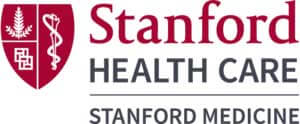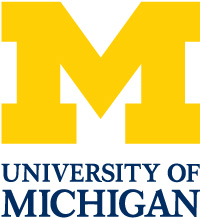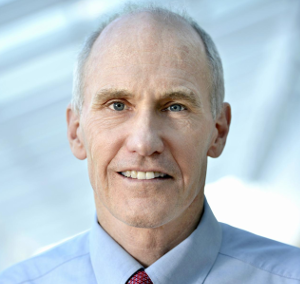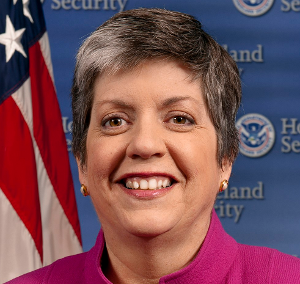Sharon works to provide ordinary people the tools to take charge of their health and to further biomedical research through her leadership of Genetic Alliance. In 1994, she cofounded PXE International, a research advocacy organization for the genetic condition pseudoxanthoma elasticum (PXE), when her two children were diagnosed with the rare condition. In 2000, with her husband, Patrick, she co-discovered the ABCC6 gene and patented it to ensure its ethical stewardship. She subsequently developed a diagnostic test and conducts clinical trials. Sharon is the author of 150 peer-reviewed papers. Read her full bio.
Questions for Sharon Terry, Genetic Alliance- PMWC 2019 Honoree
Q: You are the CEO of Genetic Alliance. What is your role as the CEO and why is this organization so important?
A: I actually try to avoid formal roles as CEO; instead, I practice showing up fully for our community: our staff and all of the organizations under our umbrella. I strive to hold the space for others to be fully themselves and meet their full potential.
I believe Genetic Alliance is only as important as its ability to empower individuals, families, and communities to transform health in many ways. We sit in a place of convergence among diverse stakeholders and have an opportunity to build a different, healthy paradigm that is centered on and serves the people.
Q: What excites you about your work?
A: Oh wow. Everything excites me. The fact that my vision from 1994 when my kids were diagnosed is now possible – I can feel it. The fact that people can drive relevant research for solutions that make a difference in their lives can happen now – in a world where so many stakeholders are saying ,“people are partners.” The words are sometimes—maybe usually—still lip service, but it is the beginning of the tipping point.
Q: How many individuals work at Genetic Alliance?
A: We are a team of about 25 people.
Q: Who does Genetic Alliance predominantly work with?
A: We work with all stakeholders from the local to global – citizen scientists and families; communities and advocacy organizations; clinicians, researchers, and policy makers; federal institutions and international coalitions; and so on. We speak in the language of each of the stakeholder types, with respect to the various cultures, and that helps accelerate the path to trust and, ultimately, to change.
Q: What is the mission of Genetic Alliance?
A: Genetic Alliance seeks to alleviate suffering through systems change, and we know the solution is putting people in the center. Our foundation is a core belief that we can imagine the design and execution of the system to serve people and their needs. Only then does the whole biomedical industrial complex will become more humane, focus on what really matters, and less on profit, promotions, papers, and pride.
Q: Genetic Alliance is actively involved in various collaborative programs. What are the goals of those programs?
A: Our main programs are:
a) Stakeholder leadership – To accelerate the inclusion of participants as key informants, we provide training and services to teach other entities to put people at the center, understanding this is about relationship not transactions. Our tools are practical, supporting a culture shift that teach researchers, clinicians, and other professionals how to facilitate engagement of patients and stakeholders in their work, prioritize research so that it answers the questions most relevant to people, integrate people and their needs into the design and execution of studies, and ensure dissemination of results back to the relevant communities. We also empower communities themselves to collect data; giving people the ability to determine how and with whom they will share. Our award-winning Platform for Engaging Everyone Responsibly (PEER)– a registry and study system, serves as a dynamic resource to keep the power in the people. As people control data, they can break the silos that hoarding has created.
b) Expecting Health – Our maternal and child health initiative meets a critical gap by bridging scientific knowledge with real life experience. We sit between federal guidelines, the obstetric and pediatric clinical communities, and the consumer world to support informed decision making throughout the life cycle. With a lens of equity and a core understanding that not all families start from a place of neutral, our tools help people navigate the complex healthcare delivery system, including the evolving screening and testing options. The cornerstone of this enterprise is Baby’s First Test, which houses the nation’s newborn screening educational center for parents and health providers.
Q: Can you provide an example of a collaborative approach the Genetic Alliance is/was fostering and that has increased efficiency in genetic research?
A: Genetic Alliance provides technical support, information, and resources to guide disease-specific advocacy organizations. Knowing that the system can create competition and duplication, we strive to improve efficiency, share infrastructure, and learn from parallel ideas and experiences. After seeing a gap in formal methods to coordinate sharing, Genetic Alliance recently opened a marketplace for organizations to get help and share expertise and services with one another when they need it.
Another collaboration example is PEER (mentioned above) – a white label platform that is customized for any group who wants to use it. Tailoring allows for that community, local look and feel, while accommodating cross-condition and multi-issue research. As we build a new partnership (to be announced soon!), we are more excited than ever to grow PEER’s capacity to meet the needs of the community and the ecosystem.
Q: Can you provide some details on the technical support and information resources you provide?
A: Our approach is to provide templatized tools that work for all: white labeled, customizable registries, biobanks, information repositories, how-to guides, and directories. We also provide training along the pathway, from the moment a person or their child is diagnosed all the way through their founding and running an advocacy organization. To meet the need, our trainings range in content and type, from highly technical information, to process, to organizational culture as a means to staying the course.
Q: What are some advocacy organizations you are working with?
A: There are too many to list, and it would be unfair to just name a few! Approximately 35 communities are currently using PEER and another few hundred organizations list themselves and their offerings on our DiseaseInfoSearch.org site. Hundreds work with each other throughout our network, enabled by our trainings and tools.
Q: Genetic Alliance also maintains a biobank as a central storage facility for several organizations. Can you explain how this came about?
A: This is a funny story. Within a few days of my children’s diagnoses at ages 5 and 7, two sets of researchers separately requested blood samples. I was appalled that the researchers did not share. I thought, if only we owned the resources—clinical data and biospecimens—we could make them share. And so we began to collect them for this disease, pseudoxanthoma elasticum (PXE). But I knew we had to go bigger when one day, our daughter asked, “can we NOT keep ovaries in our freezer next to the ice cream?” We rented space at a local university to store the samples. Very quickly we realized that what we were doing for one condition, we should do for all. We established our own IRB, properly registered with the NIH, received a Certificate of Confidentiality, and established a formal structure for the bank.
Q: Who has access to these samples and how is it all managed?
A: Each of the advocacy organizations that uses the biobank makes their own decisions, per the consent of their members, about how the samples are used. Genetic Alliance simply provides the infrastructure and training.
Q: Data sharing faces numerous hurdles across the life science sector. What are some of these challenges and how can we overcome them?
A: Start sharing. That would be amazing. I am so tired of academic medical centers using IRBs, HIPAA, and other regulatory policies or bodies to cover for greed. Until they begin to see data as pre-competitive, we will have to find an alternative path. Funders should require data sharing, all of the time, for everything. I can hear them in my head: “…but competition is critical.” How is that working out for you? No good business models, under-enrolled trials, slow and expensive pathways to interventions… and we want to keep hoarding data and repeating this process. Imagine if the general public knew that sharing doesn’t happen regularly and with enthusiasm. I also believe that those of us outliers should take even bigger risks and prove another pathway. Be the Napster to the music industry, ride-sharing to the cab industry; we can do it!
Q: How contributing are fear of sharing private information, lack of standards, and policy-related issues? Can you explain?
A: Fear of sharing information is as varied as there are people. We believe in acknowledging the fear that is real; everyone should be able to make a choice, both to protect information and also to share it. The problem is that people cannot share their data sometimes event if they want to. We need durable and appropriate standards. And for policy: we need to stop protecting broken models and get innovative– even in ways that risk promotions, papers, and so on. We win when this is about the collective.
Q: Many of the major health initiatives recently launched build on the principles of effective data generation and sharing. The benefits are clear yet how can we ensure the data is shared across initiatives so we can better understand the molecular details including the genetics leading to different diseases?
A: For me, it is making sure that people are the center. Instead the chatter is about whether we will be double counting people, whether we will get quality complete information. I think we have to demand, as the people who wake up every day with a diagnosis and its manifestations, that real work will continue to push us forward.
Q: Is there anything else you would like to share with the PMWC audience?
A: This is personal for me. Each of us has to show up fully, with curiosity and interest in each other. This will open us up to the point where our/my boundaries will dissolve and authentic collaboration will be possible. I also know that I need to turn toward what I fear and invite others to do that – in a gentle and supported way. I love practicing giving breath and space to our daily activities, even in big forum. I love pausing to ask each other, “Tell me what you need.” In slowing down and listening, not trying to solve or fix, I find the path to great appreciation for the life I have been given. If I come to the work and to my family and friends from this place, I have energy, I have courage, and most importantly, I have love.
The Precision Medicine World Conference (PMWC), in its 17th installment, will take place in the Santa Clara Convention Center (Silicon Valley) on January 21-24, 2020. The program will traverse innovative technologies, thriving initiatives, and clinical case studies that enable the translation of precision medicine into direct improvements in health care. Conference attendees will have an opportunity to learn first-hand about the latest developments and advancements in precision medicine and cutting-edge new strategies and solutions that are changing how patients are treated.
See 2019 Agenda highlights:
- Five tracks will showcase sessions on the latest advancements in precision medicine which include, but are not limited to:
- AI & Data Science Showcase
- Clinical & Research Tools Showcase
- Clinical Dx Showcase
- Creating Clinical Value with Liquid Biopsy ctDNA, etc.
- Digital Health/Health and Wellness
- Digital Phenotyping
- Diversity in Precision Medicine
- Drug Development (PPPs)
- Early Days of Life Sequencing
- Emerging Technologies in PM
- Emerging Therapeutic Showcase
- FDA Efforts to Accelerate PM
- Gene Editing
- Genomic Profiling Showcase
- Immunotherapy Sessions & Showcase
- Implementation into Health Care Delivery
- Large Scale Bio-data Resources to Support Drug Development (PPPs)
- Microbial Profiling Showcase
- Microbiome
- Neoantigens
- Next-Gen. Workforce of PM
- Non-Clinical Services Showcase
- Pharmacogenomics
- Point-of Care Dx Platform
- Precision Public Health
- Rare Disease Diagnosis
- Resilience
- Robust Clinical Decision Support Tools
- Wellness and Aging Showcase
See 2019 Agenda highlights:
- Five tracks will showcase sessions on the latest advancements in precision medicine which include, but are not limited to:
- AI & Data Science Showcase
- Clinical & Research Tools Showcase
- Clinical Dx Showcase
- Creating Clinical Value with Liquid Biopsy ctDNA, etc.
- Digital Health/Health and Wellness
- Digital Phenotyping
- Diversity in Precision Medicine
- Drug Development (PPPs)
- Early Days of Life Sequencing
- Emerging Technologies in PM
- Emerging Therapeutic Showcase
- FDA Efforts to Accelerate PM
- Gene Editing / CRISPR
- Genomic Profiling Showcase
- Immunotherapy Sessions & Showcase
- Implementation into Health Care Delivery
- Large Scale Bio-data Resources to Support Drug Development (PPPs)
- Microbial Profiling Showcase
- Microbiome
- Neoantigens
- Next-Gen. Workforce of PM
- Non-Clinical Services Showcase
- Pharmacogenomics
- Point-of Care Dx Platform
- Precision Public Health
- Rare Disease Diagnosis
- Resilience
- Robust Clinical Decision Support Tools
- Wellness and Aging Showcase
- A lineup of 450+ highly regarded speakers featuring pioneering researchers and authorities across the healthcare and biotechnology sectors
- Luminary and Pioneer Awards, honoring individuals who contributed, and continue to contribute, to the field of Precision Medicine
- 2000+ multidisciplinary attendees, from across the entire spectrum of healthcare, representing different types of companies, technologies, and medical centers with leadership roles in precision medicine













